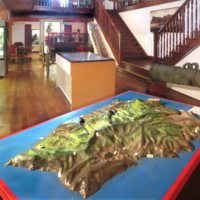
Museum of Saint Helena
The Museum of Saint Helena originated as a small natural history collection in 1854. Over the last 150 years it has moved three times before being officially opened in its current site in 2002 to mark the 500th anniversary of the island's discovery. It is housed in an eighteenth-century former power station in the island's capital, Jamestown. The museum explores the history of St Helena and it's position in the world. It has a large collection of physical artefacts supplemented by a digital archive of images, videos and audio.
The permanent exhibition offers a chronological view of Saint Helena's history, beginning with its geological development. The displays then explore the discovery of the island by European's, the role of the East India Company and migration. There is also a display about Napoleon Bonaparte's exile to Saint Helena.
Within the displays about colonisation and the East India Company are mentions of enslaved Africans brought to the island. Abolition and emancipation are also examined, as the interpretation moves on to explore the diverse make up of Saint Helena's population into the twentieth century. These displays are supported with artefacts and finds from recent archaeological digs on the island.
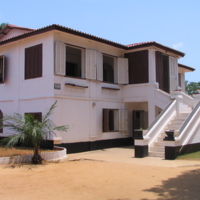
Le musée d'histoire de Ouidah
Le musée d'histoire de Ouidah (The Ouidah Museum of History) is located within the Old Portuguese Fort in Ouidah. The Fort was used to contain and transport enslaved Africans as part of the transatlantic slave trade, serving as the site for diplomatic presence of Portugal in the area. The fort became property of the Dahomean government in 1961, when it was restored and turned into a museum, opening in 1967. It is managed by the Department of Cultural Patrimony.
The museum's collections are grouped into six major exhibit themes: the Portuguese Fort (in which the museum resides), the Kingdom of Xwéda, the Kingdom of Dahomey, the Slave Trade, Vodun, and the cultural links between Benin and the New World. These collections are made up of artefacts, photographs and objects that have significant meaning to the history and culture of the museum's local area.
The history of slavery runs throughout the displays; from the Portuguese Fort display which discusses how enslaved Africans were kept there. The displays that explore the kingdoms of Xwéda and Dahomey use collections to emphasise the extent to which both of them were dependent on the trade in enslaved individuals with Europeans for riches and power. These include a range of archaeological finds, as well as engravings and drawings. The exhibition about the religious traditions of the area, in particular the development of Voodoo, reflects on the continued use of African religions by enslaved people in the Americas during the period of the transatlantic slave trade, using religious artefacts. A range of images and objects showcase the impact that people from Benin made on the cultures of New World societies, as well as the effects of mass repatriation to Benin after the decline of the slave trade.
The Slave Trade exhibits examine the system of transatlantic slavery from the sixteenth to the nineteenth century and how it impacted on the local area. The main focus is on the economic and social processes that the slave trade created in Benin, capture, enslavement and the Middle Passage. These themes are illustrated with a range of objects, artists' renditions and archival materials. Examples of objects on display include chains and yokes. Images are also used to give some information about the plantation system in the Americas and Caribbean.
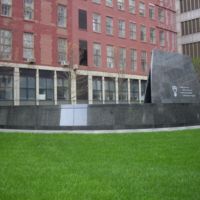
African Burial Ground National Monument
The memorial was founded after human remains were discovered underground by city workmen who were attempting to build some government offices in the 1990s. The remains belonged to enslaved Africans who were building New Amsterdam (present day New York). The African Burial Ground National Monument honours these Africans’ memory, having reburied them in a more respectful manner. It is the oldest and largest known excavated burial ground in North America for both free and enslaved Africans. A 'sacred space in Manhattan', the mission of the memorial is to acknowledge New York's involvement with slavery and the slave trade to provide a respectful and symbolic space for the reinternment of the African remains found at the site.
The facilities at the centre include a range of exhibits, a twenty-minute film and a book/gift shop. In addition, the memorial also offers on-site presentations in the visitor centre consisting of an hour long programme. The memorial is managed by the National Park Service and the U.S Department of the Interior.
The process of memorialization and the research conducted about the enslaved African skeletal remains was negotiated extensively between the General Services Administration, the African American descendant community, historians, archaeologists, and anthropologists. Civic engagement led to the ancestral remains reinternment within the original site of discovery. An external memorial, an interpretive centre, and research library were constructed to further commemorate the financial and physical contributions of enslaved Africans to colonial New York, and to honour their memory. The exhibits examine the history of the initial discovery, the research conducted to identify the remains, the documentation process and associated artefacts.
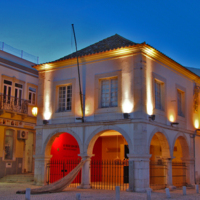
Mercado de Escravos
The Mercado de Escravos (or Slave Market Museum) is situated in the center of Lagos on the site of a fifteenth-century slave market, believed to have been the first in Europe. The museum building itself was built in the seventeenth century on the remains of the market, first as the Royal Overseer's Office, and then as the Customs House from 1755. The museum seeks to highlight the history of Portuguese involvement in the enslavement of African people.
The opening displays in the museum provide the visitor with detail about the process of enslaved Africans being transported from Africa to Portugal, and how they were then integrated into Portuguese society. There is also a panel which provides information linking this to the slave trade in Brazil, which was then a Portuguese colony.
On the second floor of the museum, there are further displays about the slave trade. The collections include books, artefacts, archival material and pieces of art (both contemporary and historic). There are tablets available so that visitors can view more of the museum's collections that are not out on display.
The Slave Market also provides visitors with information about archaeological excavations on the medieval rubbish tip of Lagos, which have led to the discovery of skeletons thought to belong to enslaved Africans.
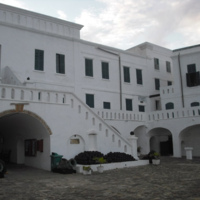
Cape Coast Castle
Cape Coast Castle is one of around forty ‘slave castles’ built by European traders on the coast of West Africa and used to hold enslaved Africans prior to their being transported to the Americas or the Caribbean. The first timber construction on the site was erected in 1653 for the Swedish Africa Company named Carolusborg. It was later rebuilt in stone. In April 1663 the ‘Swedish Gold Coast’ was seized by the Danes and integrated into the ‘Danish Gold Coast’. In 1664 it was conquered by the British. Originally used for trade in timber and gold, the castle was later used in the transatlantic slave trade. In the late 18th century it was rebuilt and used as the seat of the colonial Government of the British Gold Coast in 1844. In 1957, when Ghana became independent, the site came under the care of the Ghana Museums and Monuments Board, and was restored for public access in the 1990s. The museum offers guided tours, as well as permitting tours orchestrated by freelance tour guides. There is also a library and a gift shop, featuring traditional Ghanaian arts and crafts, on site.
The main aim of the museum is to act as a monument to those taken from Africa and enslaved into the system of Transatlantic Slavery. It features both archaeological and ethnographic collections on displays, within the rooms of the castle. Throughout, there are also a number of contemporary sculptures depicting the heads of victims of the slave trade. Visitors tour through the castle, encountering the rooms in which the enslaved were held, with guides providing further information about the conditions and experiences those thousands of Africans faced.
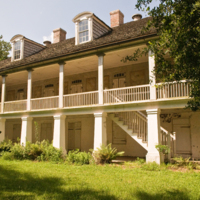
The Whitney Plantation
Widely claimed to be the first museum in America to solely address slavery, the Whitney Plantation is a plantation estate, museum and memorial outside New Orleans, on Louisiana's famed River Road. During the eighteenth and nineteenth centuries, the plantation was home to the Haydel family, and their enslaved workers. The site was bought in 2000 by a retired lawyer, John Cummings, who funded the renovation and redevelopment of the site, which opened to the public as a museum in 2014. On arrival, visitors must join a guided tour to see the majority of the site, but the museum is open to all.
On the property visitors will find a range of exhibits, including the Mansion House, slave quarters, a blacksmith's shop and a Baptist church. There is also a 'Wall of Honour' which features the names of all those enslaved at the plantation, as taken from the site's archives. In addition, there is a sculpture installation created by American artist Woodrow Nash called 'The Children of Whitney,' that seeks to remind visitors that slavery affected children as well as adults.
The site houses a significant collection of artefacts too. These range from plantation tools and house furniture. There is even the largest collection of sugar kettles in the whole of Louisiana. Much of this collection has been purchased at auctions around the USA, in a bid to redisplay the site as it was during the antebellum period. There are three archaeological sites which also contribute collections of material linked to the lives of the enslaved themselves. All of this provides visitors with a unique perspective of plantation life, and helps to break down the ignorance still surrounding histories of American enslavement.
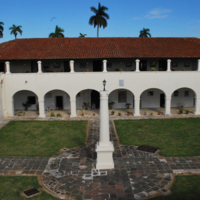
Museo Nacional Ruta del Esclavo
The Museo Nacional Ruta del Esclavo (Slave Route National Museum) is housed in San Severino Castle, in the Matanzas district of Cuba. It opened in 2009, as the product of UNESCO's Slave Route project. Off the beaten tourist track, the museum in the seventeenth-century castle receives few visitors.
The museum itself houses an important exhibition, aimed at showcasing the horrors of the Transatlantic Slave Trade in order to prevent the like ever happening again. The museum has four exhibition rooms with photographs, objects and archaeological items accompanied by interpretive text. These rooms address the origins of slavery, the plantation systems, abolition and emancipation, and the ongoing legacies affecting people of African heritage around the world.
After being selected by UNESCO to house interpretation for the Slave Route project, the museum has supported a number of African cultural groups in the local area, as well as hosting activities for the nearby university. In the exhibition space itself, there are fourteen African sculptures donated by Cuban artist Lorenzo Padilla.
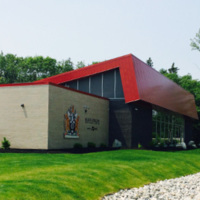
Black Loyalist Heritage Centre
The Black Loyalist Heritage Centre interprets the story of the world’s largest free African population outside of Africa in the late eighteenth century in Nova Scotia. Set in two acres of grounds, the centre combines purpose-built archives and conference facilities with historic buildings and the National Monument commemorating the Black Loyalist Landing in Birchtown in 1783. The centre was funded by both government and private donations and opened in 2015.
The centre houses a multimedia presentation of the Black Loyalists' journeys from Africa to the American colonies, then to Nova Scotia and back again. In addition, there is an archive where visitors can trace their own ancestors, a virtual version of Carlton's 'Book of Negroes' that visitors can browse, and an opportunity to create a virtual quilt square reflecting on the visitor experience.
As well as these technological initiatives, there is also a pit featuring archaeological remains excavated from Birchtown in the 1990s. With these collections, the museum showcases both the significance of the African presence in Nova Scotia, as well as the African Diaspora around the world.
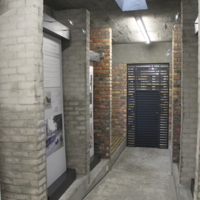
Prestwich Memorial
The Prestwich Memorial opened in 2008 as an attempt at resolving a protracted and sometimes unsavoury dispute sparked in 2003 when a property developer discovered human remains in central Cape Town whilst digging the foundations for an apartment complex. These remains were likely those of the colonial working classes, buried in the many unmarked eighteenth and nineteenth century graves. For certain activists, the remains were identified as those of their enslaved ancestors. A dispute began between people opposing exhumation on the grounds of respect for ancestors, versus those who advocated exhumation owing to the unprecedented opportunities offered to furthering historical and scientific knowledge. Following a public consultation process, the bones were exhumed, but were not subjected to analysis.
The memorial was constructed on behalf of the City of Cape Town municipality to house the remains, and provide an exhibition space to explain the affair. The opening of an artisan coffee shop named Truth in the memorial building in 2010 however created further contestations on the grounds of taste and respect for the dead.
The memorial features a number of fixed interpretation boards which explain the colonial burial system, the unmarked cemeteries beneath the modern city, and the type of people likely to have been buried in them. Enslaved people, of course, feature in this number. The bones themselves are situated in an ossuary area, accessible by a low entrance. They are separated from the public by a wooden gate. Whilst research applications to study the bones are invited, no applications have been accepted at the time of writing by a panel including stakeholders from various sides of the exhumation debate.
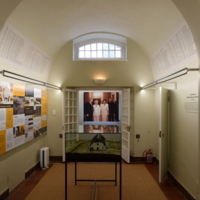
Vergelegen
Vergelegen is a wine estate, founded in 1700 and presently owned by Anglo-American subsidy AmFarms. As with the majority of South African wine farms of such a vintage, its early labour force rested on enslavement. Historical interpretation on the estate can be traced to an archaeological dig conducted by a team of academics from the University of Cape Town between 1990 and 1992. At a time of burgeoning scholarly enquiry into Cape slavery, this work excavated the former slave lodge on Vergelgen with the explicit intention of unearthing items which might hint towards the existence of slave culture. A number of personal items including coins and buttons were discovered, whilst the most significant find was of the skeletal remains of an enslaved woman who was affectionately named ‘Flora’ by estate staff.
The results of the archaeological work were displayed in the estate’s foyer together with contextual information. This made Vergelegen probably the first location in South Africa to mount a detailed exhibition relating to Cape slavery. The existence of the archaeological objects can be considered particularly significant, given that few tangible links with Cape slavery exist in museum collections. A second exhibition focussing on Vergelegen’s historical owners was developed several years later in the former manor house, and both exhibitions were subsequently amalgamated prior to being refreshed in 2016.
Presently, the names of people known to have been enslaved on Vergelegen are listed on the wall/ceiling of the first gallery, whilst the origins of enslaved people and their role on the estate are made clear. The objects unearthed during the early 1990s are displayed as tangible links with a past described by text. Additional historical context focuses on wine farming and the early Cape economy, historical estate owners, and notable visitors to Vergelegen.
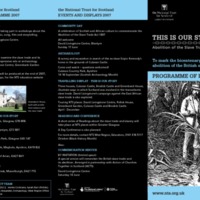
This is Our Story
To mark the bicentenary, the National Trust for Scotland put together a wide-ranging programme of events to engage their audiences with Scottish connections to slavery and abolition. Three National Trust for Scotland properties in the West of Scotland – Culzean Castle, Brodrick Castle and Greenbank House – illustrate the ways in which Scotland was involved in the transatlantic slave trade. A touring exhibition based on this new research was shown at these sites and others in the West of Scotland. The Beckford Collection of furniture, silver and China at Brodrick Castle, on the Isle of Arran, once belonged to William Beckford, owner of several sugar plantations in the West Indies. Scipio Kennedy from ‘Guinea’ lived at Culzean Castle, Ayrshire, from 1710, first as a slave and then as a paid servant. The Allason brothers of Greenbank House were traders in tobacco and slaves. David Livingstone spent much of his life campaigning against the slave trade based in East Africa. His work is remembered at the David Livingstone Centre in Blantyre.
The 2007 Learning Programme involved workshops for local community groups and a resource pack for teachers and youth leaders. Events included a celebration of Scottish and African culture at the David Livingstone Centre; a survey and excavation in search of the ex-slave Scipio Kennedy’s home in the grounds of Culzean Castle; and a Commemoration Service arranged in partnership with Action of Churches Together in Scotland (ACTS).